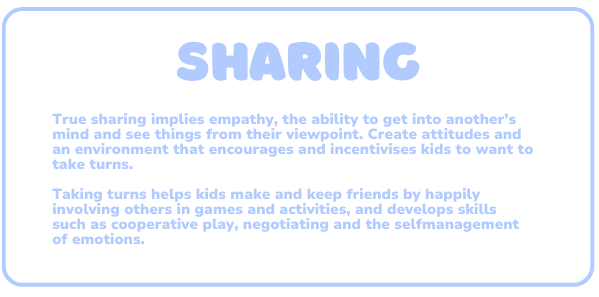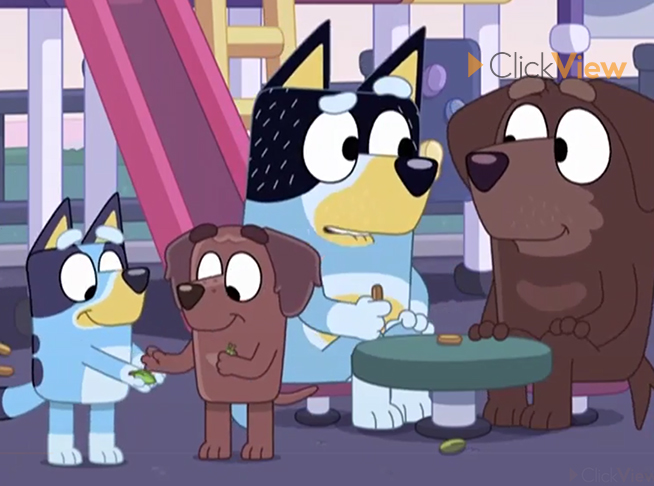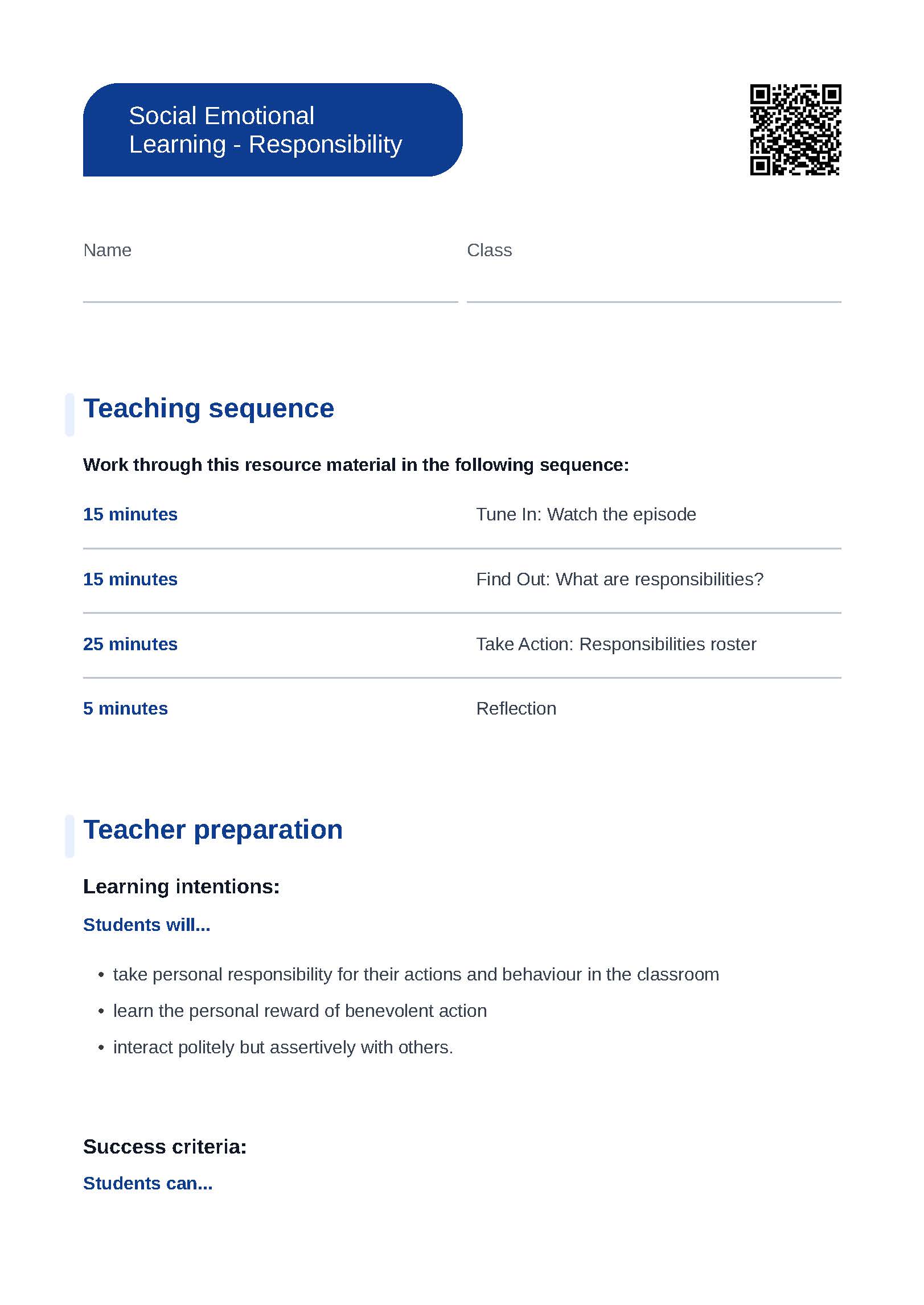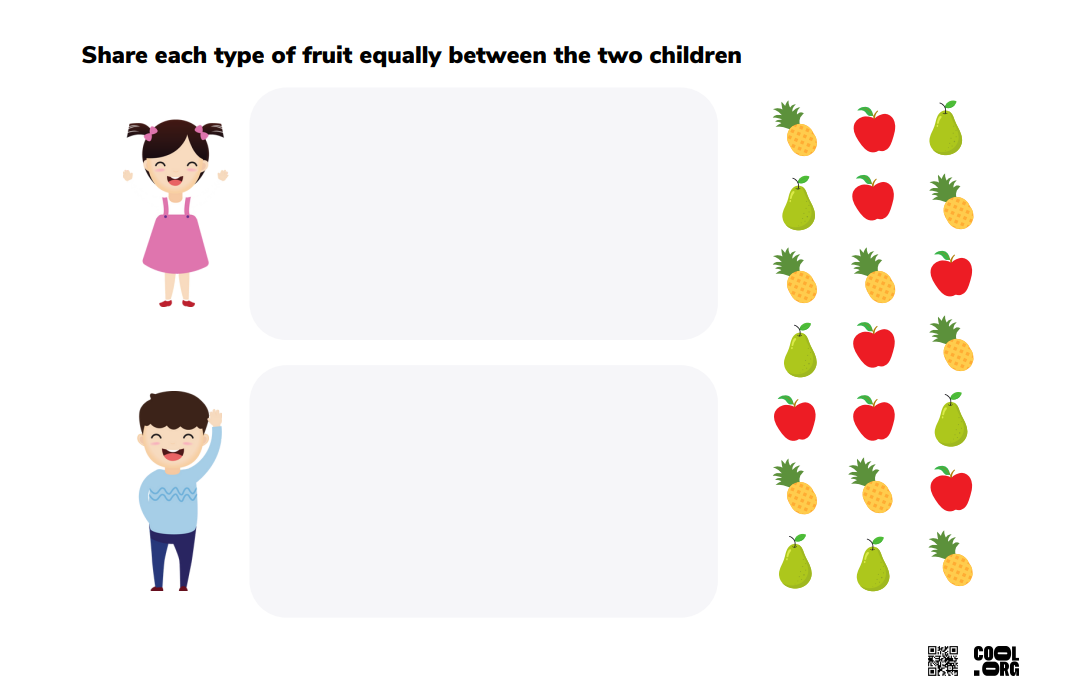Lesson summary
The animated series Bluey serves as a valuable tool in fostering children's development of imagination, curiosity, and social and emotional learning.
This lesson focuses on the capability of sharing. Students will learn how to share an even amount of cafe food items, and come up with a solution of what to do when there isn’t quite enough to go around.
This suite of resources supports emotional and social learning and oral language development through a values framework. Each lesson uses intentional teaching strategies to develop a specific value. This lesson focuses on:

Click here for a full list of the values that underpin these lessons.
This lesson showcases a Bluey episode, which can be viewed on ClickView. Don't have a ClickView subscription? Bluey is also available on ABC iView. For real life!
Learning intentions
Students will:
- count, up to 20
- divide equally between groups
- begin to consider the concept of a remainder when dividing by whole numbers
- begin to consider the concept of fractions
- show empathy and understanding towards others.
Success criteria
Students can:
- understand the concepts of equal and unequal
- understand the concepts of fair and unfair
- use the sharing method to divide a number of objects equally between groups
- consider the ability of some objects to be split in half
- take a non-egocentric view of sharing valuable objects.
Lesson guides and printables
Curriculum links
Select your curriculum from the options below.
Lesson details
Curriculum Mapping
Australian Curriculum content descriptions:
Foundation Year Mathematics
- Identify and compare attributes of objects and events, including length, capacity, mass and duration, using direct comparisons and communicating reasoning (AC9MFM01)
Year 1 Mathematics
- Add and subtract numbers within 20, using physical and virtual materials, part-part-whole knowledge to 10 and a variety of calculation strategies (AC9M1N04)
Year 2 Mathematics
- Multiply and divide by one-digit numbers using repeated addition, equal grouping, arrays, and partitioning to support a variety of calculation strategies (AC9M2N05)
- Identify common uses and represent halves, quarters and eighths in relation to shapes, objects and events (AC9M2M02)
- Recognise and describe one-half as one of 2 equal parts of a whole and connect halves, quarters and eighths through repeated halving (AC9M2N03)
Syllabus outcomes: MAO-WM-01, MA1-GM-02, MA1-GM-03, MA1-3DS-02, MA1-FG-01.
General capabilities: Numeracy, Critical and Creative Thinking, Personal and Social Capability
Relevant parts of Foundation Year Mathematics achievement standards: Students identify the attributes of mass, capacity, length and duration, and use direct comparison strategies to compare objects and events.
Relevant parts of Year 1 Mathematics achievement standards: Students solve problems involving addition and subtraction of numbers to 20 and use mathematical modelling to solve practical problems involving addition, subtraction, equal sharing and grouping, using calculation strategies.
Relevant parts of Year 2 Mathematics achievement standards: Students demonstrate how one- and two-digit numbers can be partitioned in different ways and that two-digit numbers can be partitioned into tens and ones. Students partition collections into equal groups and skip count in twos, fives or tens to quantify collections to at least 120. They solve problems involving addition and subtraction of numbers to 20 and use mathematical modelling to solve practical problems involving addition, subtraction, equal sharing and grouping, using calculation strategies.
Level of teacher scaffolding: Low - Teachers support students where necessary.
Resources Required
- Art supplies – coloured pencils and markers
- Counters or other concrete counting materials
- Device capable of presenting a video to the class
- Sharing Maths Student Worksheet
- Whiteboard
Additional Info
This is not an official Bluey lesson. Cool.org does not have an official partnership with Bluey.



Welcome back!
Don't have an account yet?
Log in with:
Create your free Cool.org account.
Many of our resources are free, with an option to upgrade to Cool+ for premium content.
Already have an account?
Sign up with:
By signing up you accept Cool.org's Terms and Conditions(Opens in new tab) and Privacy Policy(Opens in new tab).